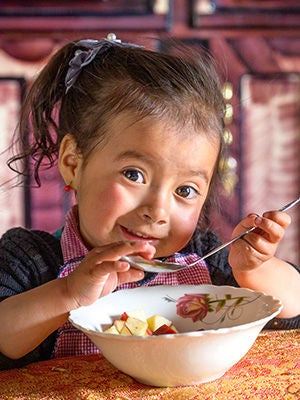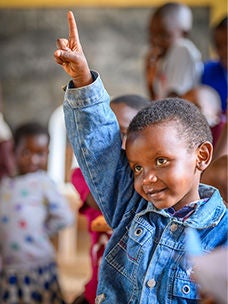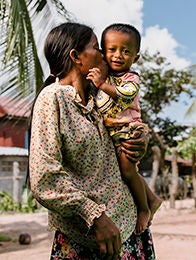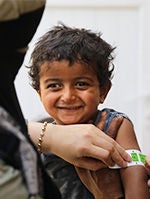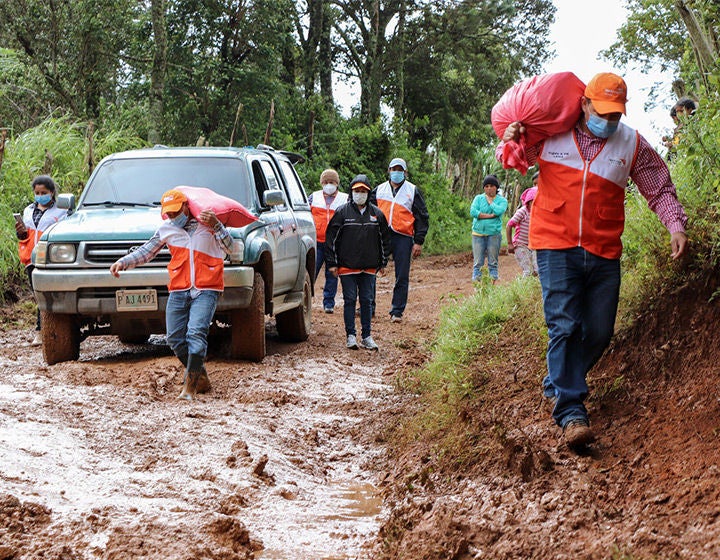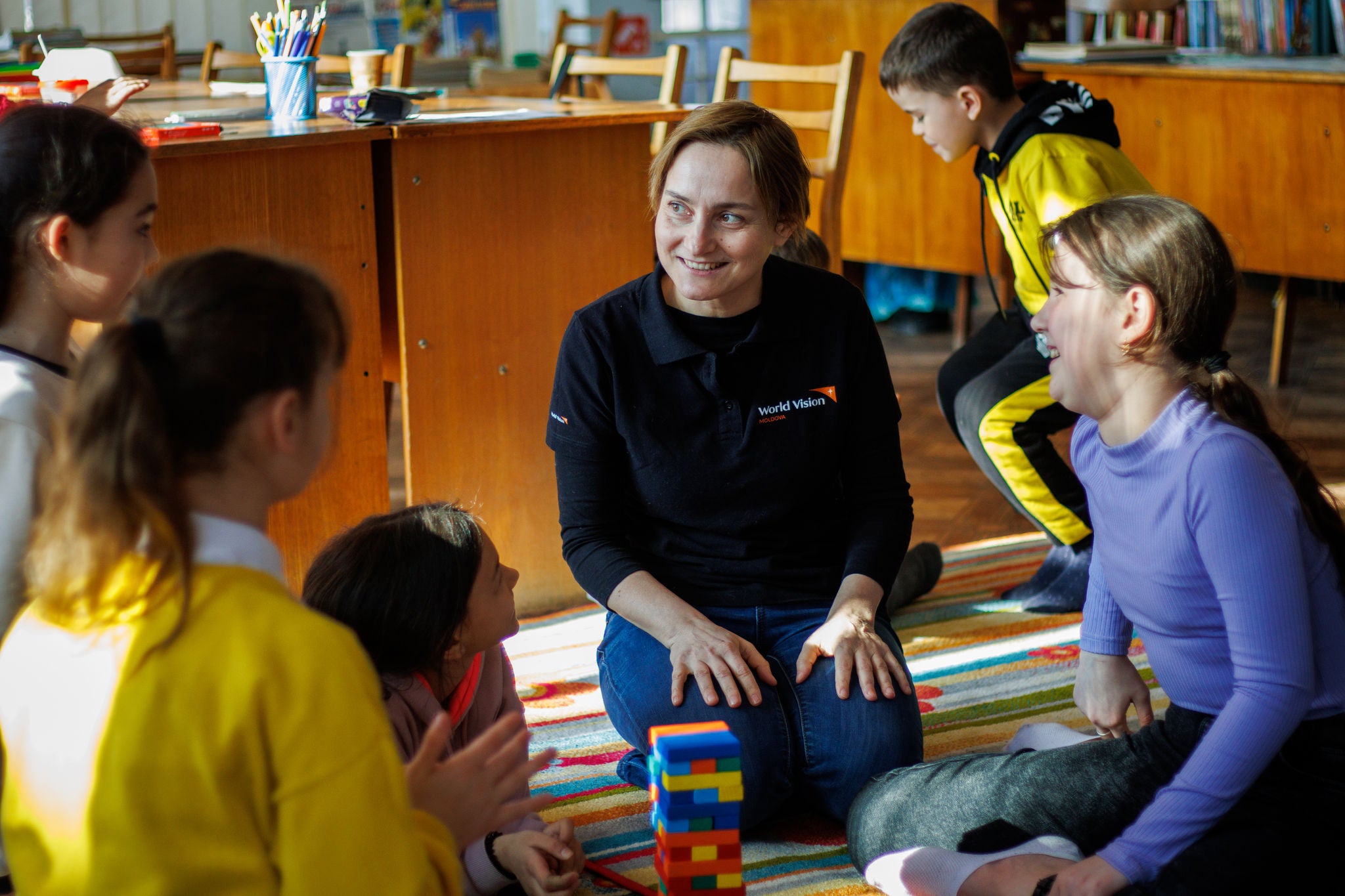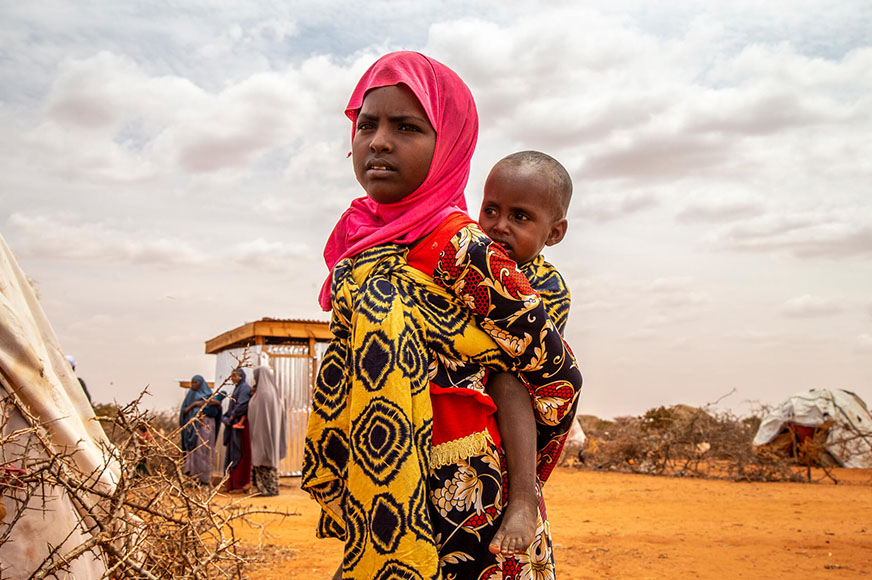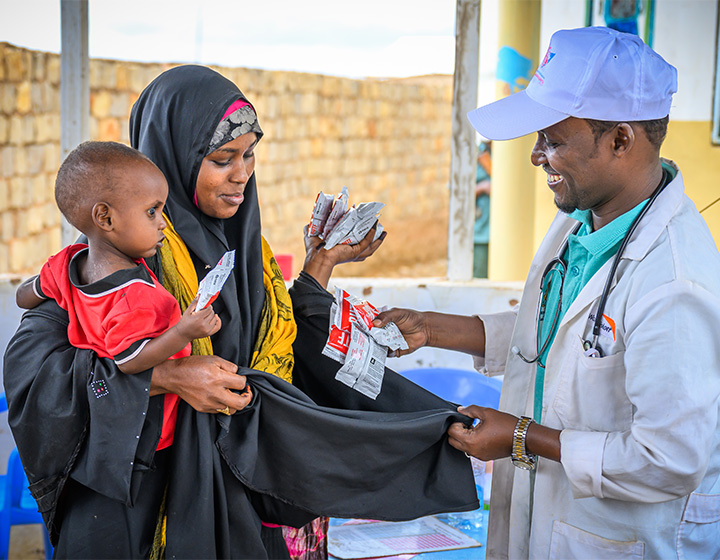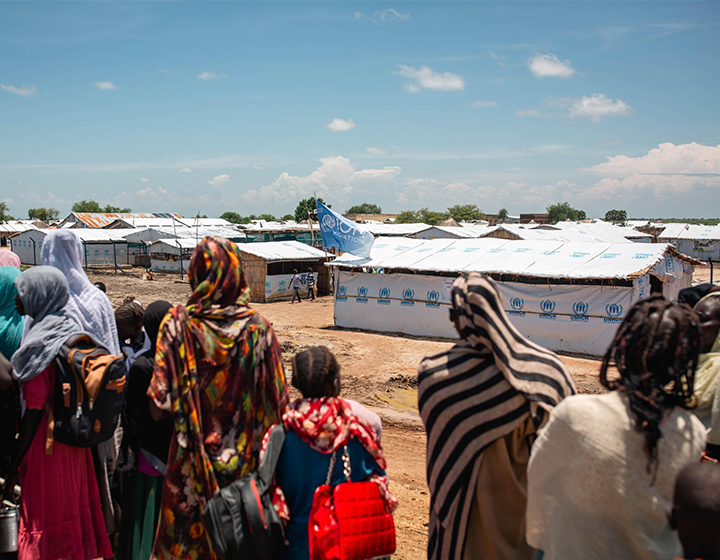Life can change in an instant
As of June 2024, nearly 123 million people have been forced to flee their homes due to humanitarian emergencies.
Whether caused by conflict or climate—like droughts or earthquakes—humanitarian emergencies can erupt unexpectedly or build up over time, resulting in mass destruction and upheaval.
The first 72 hours
With more than 34,000 staff in nearly 100 countries, we are quick to the scene in an emergency. Here’s how we help save lives:
Prioritize children, especially those who require first aid or have been separated from their guardians.
Distribute emergency food packs and supplies, such as high energy biscuits for young children, tarpaulins, tents, cooking pots and jerry cans for water and fuel. If needed, we also organize in-kind food distribution with the World Food Programme.
Assess community infrastructure, such as roads, airstrips, bridges, community centres, schools and homes.
Distribute electronic cash transfers to families in urgent need, which they can use to purchase food at local markets, if possible.
Our work doesn’t end after 72 hours. In fact, we stay as long as it takes—sometimes even years—to help communities recover and rebuild.
Featured article
-
Just give money? The beauty of cash assistance in emergency response

Disaster Relief
-
10 things you need to know about Syria

Syria
Disaster Relief
-
The landslide that changed everything

Disaster Relief
Explore more articles
Explore more articles
Explore more articles
We trained 59,927 people to reduce their risks during a disaster.
That’s almost as many reservists and firefighters we have in Canada.

Program expenditures
How our donors choose to help
Consistency and commitment—the formula for lasting change. Together, through monthly donations and community-led solutions, our work spans across five sectors where impact is needed most.
Explore
When our community grows, so does our impact.
Let's help build a world of opportunities for every child, no matter the location or circumstance.
